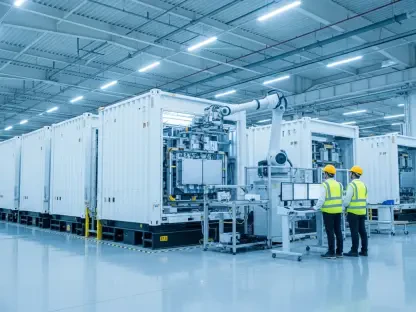The escalating threat of climate change has reached a point of global consensus, depicting a ubiquitous acknowledgment of its potential perils to humanity. However, while a majority across the globe recognize human actions as contributors to climate emergencies, there exists a disparity between acknowledgment and everyday behavior. A primary barrier contributing to this discrepancy is financial cost. Both consumers and businesses, although growingly cognizant of sustainability, find themselves heavily influenced by the pressures of rising living costs, compelling them to prioritize affordability over environmental consciousness. Businesses, while recognizing a responsibility towards sustainability, must simultaneously ensure their financial sustainability.
Nonetheless, print reduction emerges as a unique environmental initiative at the intersection of cost-savings and sustainability. For organizations targeting sustainability, investing in print reduction presents an area where economic and environmental interests align seamlessly. This strategy not only mitigates waste but also reduces overhead costs significantly, creating a win-win scenario for both the organization and the environment. By adopting print reduction measures, companies can see immediate financial benefits by decreasing expenditures on paper, ink, toner, and energy—resources that not only strain budgets but also harm the environment. Print reduction allows businesses to streamline their operational processes, making a noticeable impact on both their bottom line and their ecological footprint.
Barriers to Sustainable Practices
Businesses and consumers alike often face the challenge of finding a balance between sustainable practices and financial constraints, notably amid rising inflation. This sometimes forces a compromise between selecting cheaper yet less eco-friendly products over their sustainable counterparts. Studies indicate that over one-third of consumers identify cost as the main obstacle hindering their ability to shop sustainably. The downturn in sustainable shopping reflects the increased inaccessibility of eco-friendly products to individuals from mid to lower-income brackets. The reality of this economic constraint makes it difficult for individuals and businesses to commit to consistent green practices, despite understanding their importance.
For consumers, convenience often trumps sustainability, especially in areas requiring conscious efforts like recycling, reducing water usage, or meat consumption, as many believe their individual actions hold negligible significance. This consumer price barrier poses a significant dilemma for enterprises. Sustainable undertakings often demand significant upfront investments, encompassing both financial costs and time. These could range from renovating infrastructures, installing energy-efficient equipment, or reengineering processes to minimize waste. Additionally, it may necessitate a comprehensive review of supply chains, switching to green suppliers, or implementing extensive organizational recycling programs. The financial and logistical hurdles involved can be a major deterrent, leading businesses to defer or dilute their sustainability initiatives.
At the foundational level, businesses would incur substantial expenses and time in conducting environmental impact audits to gauge their resource and energy consumption, alongside the waste generated. These audits are pivotal in setting realistic sustainability goals. Yet, they precede an initial phase of investments, representing a significant challenge before the actual endeavors to reduce environmental impacts commence. Furthermore, the need for ongoing evaluation and modifications to sustain these green initiatives means dedicating continuous financial and human resources, which many organizations—especially smaller ones—might find overwhelming. The painstaking balance required between immediate financial limitations and long-term environmental benefits often places sustainable practices on the back burner.
Print Reduction: Marrying Cost-Savings and Convenience
Unlike many other sustainable solutions, print reduction provides a compelling case for businesses owing to its inherent cost-savings and convenience benefits. Simply reducing the volume of printouts, and by extension resource consumption, integrates immediate financial savings alongside sustainable gains. Reducing printing not only mitigates paper usage but also decreases associated costs like ink, toner, power, and the number of printing devices required. This dedicated approach to trimming excess printing can lead to substantial reductions in office supply expenses, directly benefiting a company’s fiscal health while fostering an ethos of sustainability.
Organizations can further leverage cost-saving through strategies like implementing print quotas, particularly in schools and offices. Print quotas limit the volume of prints which inherently reduces waste while also encompassing associated resource usage, including physical and chemical inputs. This mechanism also encourages employees to be more mindful about their print requirements, ultimately fostering a culture of sustainability within the organization. For instance, setting a limit on monthly print quotas can spur more strategic utilization of print resources, compelling staff to reflect on their necessity and opt for digital solutions when feasible.
Account allocation presents another strategic approach where organizations assign specific print quotas based on departments or projects, allowing for meticulous budget management and efficient fund redirection to other crucial areas. Additionally, reducing print volume means saving time – an often untapped advantage. By printing less, individuals spend less time handling print jobs, thereby improving efficiency and convenience, especially with tools like Find-Me printing. This tool permits users to send print jobs to a single queue, releasing prints from any proximate printer, subsequently saving time and availing convenience. These measures, combined, foster an environment where print reduction is seen not only as a cost-saving initiative but as a practical approach enhancing operational efficiency.
Real-World Implementation and ROI
Print reduction directly translates into a considerable reduction in environmental footprints, given its impact on paper, toner chemicals, and power consumption. The comparables of a business cutting down on print volumes illustrate substantial financial and ecological savings. For example, a business with 50 employees, printing the US average of 31 pages per day at a cost of 5 cents per black-and-white page and 15 cents per color page, would realize cost savings of approximately $10,500 with a 20% print reduction in the first year. Additionally, environmental savings would manifest as 1.3 trees saved, 903 kg fewer emissions of carbon dioxide, and energy savings equivalent to running a 60W light bulb for over three years.
Monitoring and managing print environments habitually result in a 10% to 20% reduction in print volumes, attributed to the changes in user behaviors fostered by such monitoring initiatives. This trend is evident across various establishments, from small businesses to large corporations, governmental agencies, and educational institutions alike. Implementing user awareness programs and transparent reporting on print usage can further enforce these positive behavioral changes. As organizations gradually adopt these practices, they witness cumulative savings, reinforcing the valuable intersection of economic efficiency and environmental responsibility.
One instance of significant savings through print reduction can be observed in KLM UK Engineering, a maintenance provider for aircraft. Their printing practices formerly generated between 5,000 to 20,000 paper sheets per aircraft check. However, post implementing print reduction measures, KLM has reported approximately £4,000 in cost savings within months. Another notable example includes a major Australian food and liquor retailer that faced pervasive print wastage due to 4,000 employees often duplicating print jobs. By adopting Find-Me printing, facilitating employees to print across any printer freely, the retailer achieved an immediate 25% reduction in paper use. Such real-world examples underscore the practical benefits and feasibility of print reduction, highlighting its role as a cornerstone of sustainable business practices.
Synthesis of Findings
Print reduction serves as a potent strategy by merging financial and sustainable benefits. Its intrinsic cost-saving features, coupled with convenience advantages, position it as a viable and advantageous approach for businesses aiming to achieve sustainability goals while maintaining economic viability. The clear financial incentives, complemented by time efficiency and the observable eco-friendly impact, underscore the efficacy of print reduction as a sustainable practice. Organizations adopting print reduction measures find themselves not only conserving resources but also promoting a culture of environmental stewardship within their workforce.
The diverse case studies emphasize print reduction’s tangible advantages, demonstrating significant cost and resource savings while minimizing environmental footprints. These examples provide a robust narrative on the value of implementing print management strategies as part of a broader organizational commitment to sustainability. Observations from sectors as varied as aerospace maintenance and retail illustrate the universal applicability and advantages of print reduction measures, reinforcing the strategy’s versatility and effectiveness in different operational contexts.
In essence, the convergence of cost-efficiencies and sustainability through print reduction offers businesses a strategic pathway for balancing financial imperatives with environmental responsibilities, creating a lasting value that aligns operational objectives with broader global ecological mandates. This balanced approach not only aids businesses in safeguarding profitability but also affirms their commitment to environmental stewardship, thereby contributing positively to global sustainability efforts. With the right strategies and tools, businesses can convert print reduction from a mere cost-saving exercise into a cornerstone of their green initiatives.
Conclusion
The growing threat of climate change has reached global agreement, illustrating a widespread acknowledgment of its potential dangers to humanity. Despite most people worldwide recognizing human actions as contributors to climate emergencies, there remains a gap between this awareness and daily behavior. The primary obstacle causing this gap is the financial cost. Consumers and businesses, aware of sustainability, are pressured by rising living costs, leading them to prioritize affordability over environmental awareness. Businesses understand their role in sustainability yet must ensure their financial health.
Print reduction stands out as an eco-friendly initiative that balances cost savings and sustainability. For companies committed to sustainability, reducing print offers a solution where economic and environmental goals align perfectly. This approach reduces waste and lowers overhead costs, benefiting both the company and the environment. By cutting down on print, organizations can see immediate savings on paper, ink, toner, and energy costs—expenses that strain budgets and harm the planet. Print reduction helps businesses streamline operations, positively affecting both their finances and ecological footprint.









